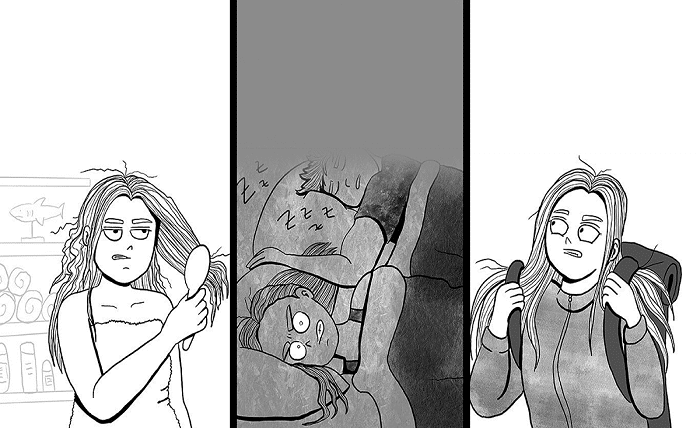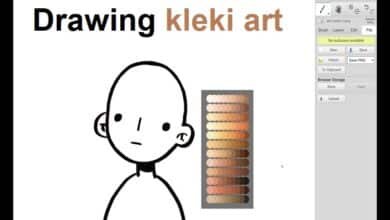Exploring Keki Art: A Comprehensive Guide to This Unique Art Form

Keki Art has been gaining significant attention in the contemporary art scene, captivating enthusiasts with its distinctive style and vibrant expressions. Whether you’re an aspiring artist or an art lover, understanding Keki Art can enrich your appreciation and creative endeavors. This comprehensive guide delves into the various facets of Keki Art, exploring its origins, techniques, and the impact it has on the art community today.
What is Keki Art?
Keki Art is a contemporary art movement characterized by its bold colors, intricate patterns, and a blend of traditional and modern techniques. Originating in the early 21st century, Keki Art draws inspiration from various cultural influences, creating a unique visual language that resonates with a diverse audience. Artists working within Keki Art often experiment with different mediums, including digital platforms, to push the boundaries of conventional art forms.
The essence of Keki Art lies in its ability to convey complex emotions and narratives through abstract and semi-abstract forms. This art style emphasizes creativity and personal expression, allowing artists to explore their inner worlds and present them in visually compelling ways. Keki Art has become a platform for artists to express their individuality while also connecting with global art trends.
Moreover, Keki Art is not confined to a single genre or subject matter. It encompasses a wide range of themes, from nature and spirituality to urban life and technology. This versatility makes Keki Art accessible to both artists and viewers, fostering a dynamic and inclusive art community.
The Origins of Keki Art
The origins of Keki Art can be traced back to the fusion of traditional art forms with contemporary influences. Emerging in the early 2000s, Keki Art was a response to the rapidly changing cultural and technological landscape. Artists sought to create a new visual language that could capture the complexities of modern life while honoring classical art traditions.
Keki Art drew inspiration from various global art movements, including abstract expressionism, pop art, and digital art. This eclectic mix of influences allowed Keki Art to evolve into a versatile and adaptive style, capable of embracing new ideas and technologies. The movement gained momentum as artists began to experiment with digital tools, enhancing their ability to create intricate and vibrant compositions.
The name “Keki” itself reflects the playful and innovative spirit of the movement. It symbolizes the breaking of boundaries and the exploration of new artistic horizons. Over the years, Keki Art has grown into a recognized and respected art form, celebrated for its originality and expressive power.
Key Characteristics of Keki Art
Keki Art is distinguished by several key characteristics that set it apart from other art movements. One of the most notable features is the use of bold and vibrant colors. Artists employ a rich color palette to create visually striking compositions that immediately capture the viewer’s attention. This use of color is often symbolic, conveying deeper meanings and emotions.
Another defining characteristic of Keki Art is the intricate patterns and detailed textures. Artists meticulously craft each element of their work, layering colors and shapes to build complex and engaging visuals. This attention to detail invites viewers to explore the artwork more closely, uncovering hidden layers and subtle nuances.
Keki Art also embraces a blend of abstract and figurative elements. While some pieces lean towards pure abstraction, others incorporate recognizable forms and figures, creating a balance between the real and the imagined. This interplay between abstraction and representation adds depth and dimension to Keki Art, making it both accessible and thought-provoking.
Additionally, Keki Art often incorporates mixed media, utilizing various materials and techniques to enhance the overall texture and composition. This versatility allows artists to experiment and innovate, continuously evolving the style to reflect contemporary influences and personal expression.
Techniques Used in Keki Art
Artists practicing Keki Art employ a variety of techniques to achieve their distinctive style. One common technique is layering, where multiple layers of paint or digital elements are stacked to create depth and complexity. This method allows for the development of rich textures and intricate patterns that are central to Keki Art.
Another prevalent technique in Keki Art is the use of digital tools and software. Many artists integrate digital painting, graphic design, and multimedia elements into their work, pushing the boundaries of traditional art forms. This fusion of digital and analog techniques enables artists to explore new creative possibilities and produce highly detailed and dynamic pieces.
Brushwork and mark-making are also essential techniques in Keki Art. Artists experiment with different brush sizes, strokes, and patterns to add movement and energy to their compositions. The varied brushwork contributes to the overall visual interest and enhances the expressive quality of the artwork.
Additionally, Keki Art often incorporates collage and assemblage techniques, combining different materials and images to create unique and multifaceted pieces. This approach allows artists to blend disparate elements, resulting in innovative and visually engaging art that reflects the complexity of contemporary life.
Influential Artists in Keki Art
Several artists have been instrumental in shaping and popularizing Keki Art. These influential figures have pushed the boundaries of the movement, contributing to its evolution and widespread recognition. Their innovative approaches and unique styles have inspired countless others to explore and embrace Keki Art.
One such artist is Maya Keki, whose vibrant and intricate compositions have become synonymous with Keki Art. Maya’s work often features bold color schemes and detailed patterns, capturing the essence of the movement’s expressive and dynamic nature. Her ability to blend traditional and modern techniques has made her a leading figure in Keki Art.
Another prominent artist is Leo Keki, known for his abstract and semi-abstract pieces that explore themes of identity and transformation. Leo’s use of mixed media and digital tools has expanded the possibilities of Keki Art, encouraging other artists to experiment and innovate within the style.
Additionally, the collaborative efforts of the Keki Collective have played a significant role in the growth of Keki Art. This group of artists shares a common vision and supports each other’s creative endeavors, fostering a vibrant and supportive community. The Keki Collective’s exhibitions and projects have brought Keki Art to a wider audience, highlighting its versatility and expressive power.
The Impact of Keki Art on Contemporary Culture
Keki Art has made a significant impact on contemporary culture, influencing various aspects of society and the art world. Its vibrant and expressive style resonates with a broad audience, making it a popular choice for public art projects, commercial design, and personal expression.
In the realm of fashion and design, Keki Art has inspired patterns, prints, and color schemes that are widely used in clothing, accessories, and interior design. The bold and dynamic aesthetics of Keki Art add a contemporary and artistic touch to everyday items, bridging the gap between high art and popular culture.
Keki Art has also influenced digital media and online platforms. Its visually striking style is well-suited for digital content, including website design, social media graphics, and multimedia presentations. The adaptability of Keki Art to digital formats has expanded its reach and allowed it to thrive in the digital age.
Moreover, Keki Art plays a role in community building and social movements. Artists use Keki Art to express their views on social issues, creating impactful and thought-provoking works that engage and inspire audiences. This social relevance has solidified Keki Art as an important cultural and artistic movement.
How to Create Keki Art
Creating Keki Art involves a blend of creativity, technique, and experimentation. Aspiring artists can follow several steps to develop their own Keki Art style and produce visually compelling works.
Start by exploring different color palettes and patterns. Keki Art is known for its vibrant colors and intricate designs, so experimenting with bold and contrasting colors can help you achieve the desired effect. Don’t be afraid to mix and match colors to create dynamic and eye-catching compositions.
Next, focus on layering and texture. Use multiple layers of paint, ink, or digital elements to build depth and complexity in your artwork. Experiment with different materials and techniques to add texture and dimension, enhancing the visual interest of your piece.
Incorporate both abstract and figurative elements to create a balance between the real and the imagined. This interplay adds depth and meaning to your Keki Art, making it more engaging and thought-provoking for viewers.
Additionally, embrace mixed media and digital tools to expand your creative possibilities. Combining traditional and digital techniques can lead to innovative and unique Keki Art pieces that stand out.
Lastly, practice and experimentation are key to mastering Keki Art. Continuously explore new ideas, techniques, and mediums to develop your personal style and push the boundaries of the movement.
Tools and Materials for Keki Art
Creating Keki Art requires a variety of tools and materials that support the intricate and vibrant nature of the style. Depending on whether you prefer traditional or digital mediums, the tools you choose will vary.
For traditional Keki Art, essential materials include high-quality acrylic or oil paints, a range of brushes, and canvases or thick paper suitable for layering. Additionally, tools such as palette knives, sponges, and stencils can help create texture and intricate patterns.
Incorporating mixed media elements, such as collage materials, metallic foils, and textured papers, can add depth and interest to your Keki Art pieces. These materials allow for creative experimentation and the development of unique visual effects.
For digital Keki Art, investing in a good graphic tablet and software like Adobe Photoshop, Illustrator, or Procreate is essential. Digital tools offer flexibility and the ability to easily experiment with colors, layers, and patterns without the constraints of physical materials.
Additionally, digital artists can explore various brushes and plugins specifically designed for Keki Art, enhancing their ability to create detailed and vibrant compositions. Combining traditional and digital tools can also lead to innovative and hybrid Keki Art styles.
Keki Art in Galleries and Exhibitions
Keki Art has found a prominent place in galleries and exhibitions around the world, showcasing its versatility and widespread appeal. Art institutions recognize the unique aesthetic and expressive power of Keki Art, featuring it in both solo and group exhibitions.
These exhibitions provide a platform for Keki Art artists to display their work to a broader audience, fostering appreciation and understanding of the movement. Galleries often highlight the intricate patterns, vibrant colors, and innovative techniques that define Keki Art, attracting art enthusiasts and collectors alike.
Participating in Keki Art exhibitions also offers artists opportunities for networking, collaboration, and exposure. It allows them to connect with other artists, curators, and art lovers, further promoting the growth and recognition of Keki Art within the art community.
Moreover, Keki Art exhibitions often include interactive and multimedia installations, enhancing the viewing experience and demonstrating the adaptability of Keki Art to various formats and settings. This dynamic presence in galleries and exhibitions underscores the significance of Keki Art as a contemporary art movement.
The Future of Keki Art
The future of Keki Art looks promising, with continued growth and innovation on the horizon. As technology advances and global influences intertwine, Keki Art is poised to evolve, embracing new mediums and expanding its expressive potential.
Emerging technologies such as virtual reality (VR) and augmented reality (AR) present exciting opportunities for Keki Art. These technologies can transform traditional Keki Art pieces into immersive experiences, allowing viewers to engage with the art in interactive and dynamic ways.
Additionally, the increasing accessibility of digital tools and platforms enables more artists to experiment with Keki Art, fostering a diverse and inclusive art community. This democratization of art creation and distribution can lead to a richer and more varied Keki Art landscape, reflecting a wide range of cultural and personal influences.
Sustainability and eco-consciousness are also likely to influence the future of Keki Art. Artists may incorporate sustainable materials and practices into their work, aligning Keki Art with broader environmental and social movements.
Overall, the adaptability and creative spirit of Keki Art ensure that it will continue to thrive and inspire future generations of artists and art lovers.
How to Get Involved in Keki Art
Getting involved in Keki Art is an exciting journey that allows you to explore your creativity and connect with a vibrant art community. Whether you’re an aspiring artist or an art enthusiast, there are several ways to engage with Keki Art.
Start by learning about the fundamentals of Keki Art. Study the works of influential Keki Art artists, understand the key characteristics, and familiarize yourself with the techniques used in the movement. This foundational knowledge will help you appreciate and create Keki Art pieces.
Join online communities and forums dedicated to Keki Art. These platforms provide opportunities to share your work, receive feedback, and connect with other Keki Art enthusiasts. Engaging with the community can inspire you and provide valuable insights into the latest trends and developments in Keki Art.
Attend Keki Art exhibitions and workshops to gain hands-on experience and learn from established artists. These events offer a chance to observe different Keki Art styles, participate in creative sessions, and expand your artistic skills.
Additionally, consider creating and showcasing your Keki Art through social media and online galleries. Sharing your work online can help you reach a broader audience, receive feedback, and build a following within the Keki Art community.
Lastly, continuously practice and experiment with Keki Art techniques. The more you create, the more you’ll develop your unique style and contribute to the evolving landscape of Keki Art.
Keki Art and Cultural Representation
Keki Art plays a significant role in cultural representation, reflecting diverse influences and perspectives. Artists incorporate elements from their cultural backgrounds, traditions, and personal experiences into their Keki Art pieces, creating a rich tapestry of global influences.
This cultural diversity within Keki Art enhances its appeal and relevance, allowing it to resonate with a wide audience. By blending various cultural motifs, symbols, and styles, Keki Art fosters a sense of unity and shared human experience.
Moreover, Keki Art serves as a medium for cultural expression and preservation. Artists use Keki Art to celebrate their heritage, share cultural narratives, and highlight social issues, contributing to a deeper understanding and appreciation of different cultures.
The inclusive nature of Keki Art encourages the exploration of multicultural themes, promoting dialogue and exchange among artists and viewers from diverse backgrounds. This cultural representation strengthens the global presence of Keki Art and underscores its significance as a contemporary art movement.
Keki Art in Education
Incorporating Keki Art into educational settings can enhance creativity and artistic skills among students. Art educators use Keki Art as a tool to teach students about contemporary art movements, techniques, and cultural diversity.
By engaging with Keki Art, students learn to experiment with colors, patterns, and mixed media, fostering their ability to think creatively and express themselves visually. Keki Art projects encourage students to explore their personal experiences and cultural backgrounds, promoting self-expression and cultural awareness.
Additionally, studying Keki Art helps students develop critical thinking and analytical skills as they interpret and discuss the meanings and techniques behind Keki Art pieces. This deeper understanding of art fosters an appreciation for creativity and innovation, essential skills in both artistic and academic pursuits.
Furthermore, incorporating Keki Art into the curriculum can inspire students to pursue their artistic interests, potentially leading to careers in the creative industries. By providing exposure to Keki Art, educators can nurture the next generation of Keki Art artists and enthusiasts.
Conclusion
Keki Art stands out as a vibrant and dynamic movement in the contemporary art world, offering endless possibilities for creativity and expression. Its unique blend of bold colors, intricate patterns, and diverse influences makes Keki Art both captivating and accessible to a wide audience. Whether you’re an artist looking to explore new techniques or an art lover seeking to deepen your appreciation, Keki Art provides a rich and rewarding experience. Embrace the world of Keki Art and discover the endless potential it holds for artistic innovation and cultural expression.
FAQs
1. What defines Keki Art?
Keki Art is defined by its bold colors, intricate patterns, and a blend of traditional and modern techniques, creating a unique and expressive art form.
2. How can I start creating Keki Art?
To start creating Keki Art, familiarize yourself with its key characteristics, experiment with vibrant colors and patterns, and explore both traditional and digital mediums.
3. Who are some notable Keki Art artists?
Notable Keki Art artists include Maya Keki and Leo Keki, who have significantly contributed to the movement with their vibrant and intricate compositions.
4. Where can I view Keki Art?
Keki Art can be viewed in contemporary art galleries, exhibitions, and online platforms dedicated to showcasing modern art movements.
5. Is Keki Art suitable for beginners?
Yes, Keki Art is suitable for beginners as it encourages experimentation with colors and patterns, allowing new artists to explore and develop their unique styles.




